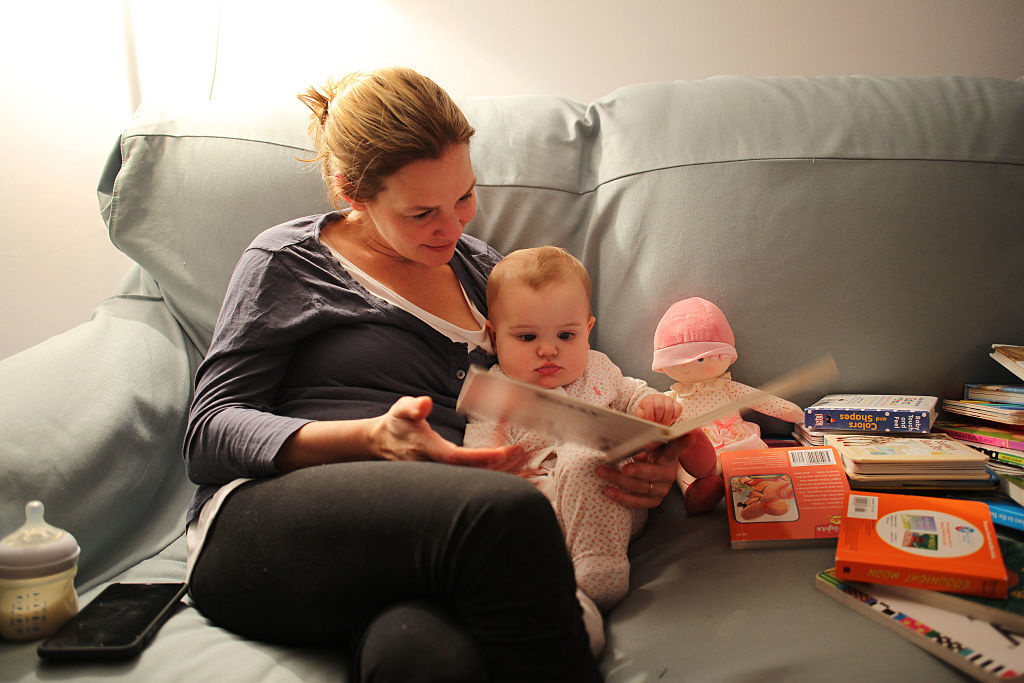Infants come equipped with higher learning skills—it’s up to adults to encourage their development, and foster their natural sense of agency. So what’s the best way to do that? Help them create their stimuli, not just consume it, says parenting expert Janet Lansbury. Screens are a fact of life for the modern infant, following them everywhere they go in their parents’ hands or pockets. How does screen-based learning affect their development? Mobile devices aren’t the devil, but understanding how an infant’s mind is developing can help you choose the best toys for the kid in your life. Screens, even small ones, can be incredibly overstimulating. Babies are soaking in their environment constantly, and their senses are stimulated by the movement of hair, light coming through the window, a small noise—they are all mysteries a baby tries to solve. Screens are entertaining, but their mystery is too complex and it doesn’t adequately demonstrate the cause and effect needed for learning. Lansbury explains how to choose the toys that will help kids become active learners—exercising their creativity and analytic mind— rather than being passive learners. Janet Lansbury is the author of No Bad Kids: Toddler Discipline Without Shame and Elevating Child Care: A Guide to Respectful Parenting
Janet Lansbury: When we’re considering offering young children technology and mobile devices or other kinds of screens when they’re very, very young we have to consider, first of all, the stimulation factor. These are brand-new people to the world that are very, very sensitive and highly aware, and all of this works to their great advantage as learners and absorbers of their environment and life.
We develop more in the first three years than the whole rest of our life put together, so they’re able to learn from an empty room, being at a position where they’re ideally free to move their bodies, so they’re able to turn their heads—we say start infants on their backs for that reason—and they could be fascinated by dust particles or the corner of the room or natural light coming in, a number of things, and they are learning something from that, they’re figuring something out. So when we offer technology it’s an onslaught on their senses basically. Not so much a phone but a larger screen. But even a mobile device or a small screen, it’s not something they’re going to be able to master, it’s not something they’re going to be able to understand how it all works.
Imagine an infant who, from the RIE approach, we believe wants to be capable, wants to be competent, wants to be able to do things and feel a sense of agency in the world right away rather than being passive to something that sort of takes over and you’re drawn into it because there’s so much going on there.
For young children it can be very over-stimulating and it can discourage them from being the active learners that we want them to be, that will help them throughout life and help them prosper and help them reach their full potential, make school easier, a lot of practical things like that, and make them be able to retain what they learn and be interested in knowing more.
So it’s interesting—screens are kind of the extreme on one end of things babies can’t understand. Just to give you an example, there are screens where babies are totally passive and it’s just coming at them and they can’t really get it, then there’s something like a toy where you push a button and it makes a sound. So that’s pretty hard for them to understand too, I mean, they have a little bit of agency there: they can figure out, “Well if I do this it makes a sound,” but they’re never going to really understand where the sound comes from in those early years, in the first year or two.
And then there’s a rattle. I mean, is a rattle a terrible thing? No. But with this approach we just try to be aware that a rattle is a mystery, there’s a mysterious element. Then there’s those rattles where you can see through them to the little thing that’s making the sound, the little bell or whatever, and so the child can feel a little more capable of mastering that and understanding that, so that’s a little more encouraging.
But then what about taking—one of the things we use as play objects in our classrooms where we teach parents, and we recommend this at home too, is little stainless steel cups or bowls. So let’s just say a child has a block and a little stainless steel cup and decides to take the block over here and make these sounds, now take it over here and make this sound. So now they’re making the sound, they’re deciding to make the sound, they’re creating the sound in a sense. So which do you think would be the most fulfilling for a child? Which do you think would really encourage them to be creative, to be learners, to analyze, to use these higher order learning skills?





